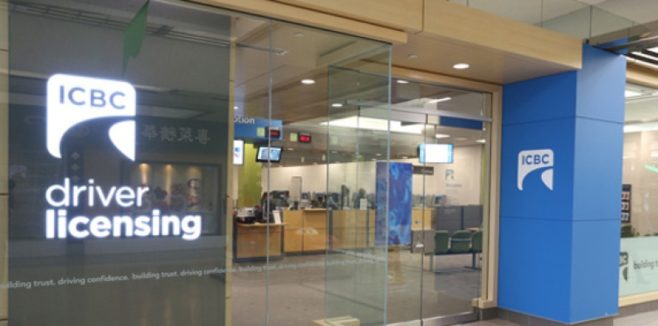Most Significant Part of Changes
• The BC NDP Government has defined certain injuries from motor vehicle accidents as “minor” by law and will apply ICBC compensation cap of $5,500 for pain and suffering damages for such “minor injuries”
• The cutTent cap for pain and suffering in all of Canada is $367,000 so it is quite a reduction.
• Pain and suffering damages is compensation for the damage that accident injuries have on your quality oflife including effect on sleep, life, health, hobbies, etc. If you are injured by a careless party such as a distracted driver, you are entitled to this compensation by law. The NDP Government is modifying this law.
• Pain and suffering damages are particularly important for the retired, self employed, unemployed and children (minors under the age of 19) because these groups are entitled to this compensation even if no work is missed. It is also important for self employed people because it is often hard to prove exactly what the wage loss is. Pain and suffering damages enables self employed persons to receive compensation for serious injuries that may not result in actual defined wage losses.
• By restricting compensation for pain and suffering damages, the BC Government is disproportionallyhurting the retired, unemployed, self-employed and children (minors under the age of 19) of BC.
• The BC Government wants ICBC to follow closer to the WCB model where pain and suffering damages have been abolished.
Date When The New ICBC Law Comes into Effect
• Any accident that occurs after April 1, 2019 may be subject to the ICBC cap if the injury is defined as “minor”. Accident that occur before this date will not be subject to the cap or minor injmy definitions.
What Injuries Has the Government Defined as “Minor”?
• The BC NDP Government has defined some very serious injuries as “minor” for ICBC purposes including clu•onic pain, psychiatric injuries such as majordepression/anxiety/PTSD and surprisingly, mild traumatic brain injuries or concussions.
The Cap is Much Harsher Than Alberta’s
• The Alberta Minor Injury cap does not capture concussions or chronic pain as does the BC ICBC definitions created by the NDP Government.
• At first, ICBC and the NDP Government told British Columbians that they would be following the model of other provinces such as Alberta
• They have gone much further than the Alberta model by capping chronic pain and mild traumatic brain injuries.
The BC NDP Government Broke It’s Promise Not to Cap Concussion/Brain Injuries
• In numerous public statements including the included onedated May 2, 2018, representations to the Legislative Assembly as noted in the transcripts (Hansard) of the Assembly, the BC NDP Government promised British Columbians that concussions/brain injuries would not be defined as “minor injuries”.
• The NDP Government also promised brain injury advocacy groups that concussions/brain injuries would not be subject to the $5,500 cap for pain and suffering damages.
• The promise in May of 2018 not to cap concussions/mild traumatic brain injuries was done when the NDP Government was well aware oflCBC’s financial situation and reported $1.3 billion losses.
• In November 2018, the NDP Government in the secrecy of cabinet included concussions/mild traumatic brain injuries in the ICBC “minor injury” definitions contrary to their promise in May of 2018.
• This was announced publicly on a Friday late afternoon before a long weekend.
• Are even more severe caps or changes to the ICBC compensation coming despite assurances?
How to Avoid the Caps – Brain Injury
• If one has a concussion or brain injury, you will have to show your injuries have caused an incapacity in your ability to work, study or care for yourself for more than four months.
• Note that symptoms lasting more than four months is not sufficient to get out of the caps.
How to Avoid the Caps?
• Ongoing neck or back pain must be projected to last indefinitely to escape the ICBC caps.
Rehabilitation/Health Care
• Yes, for “at fault” drivers who cause accidents, they will see an increase in their eligibility for coverage/reimbursement for certain rehabilitation and health care expenses related to the accident injuries.
• However, this increase in eligibility is subject to approval by an ICBC adjuster. These are called “no fault insurance” or “Part 7” benefits.
• Under the present system, a victim injured by a careless driver can claim and receive reimbursement for reasonable rehabilitation and health care expenses even if denied by an ICBC adjuster.
Will the $5,500 Injury Caps Solve ICBC’s Financial Problems?
• No, they won’t.
• ICBC will continue to be under financial stress until the increase in accident rates in BC is brought down – caps or no caps.
• Accident rates are rising at approximately 2-3 times population growth due to distracted driving, more electronic distractions within vehicles, more vehicles on existing roads, poor driver education/habits and more congestion.
• Punishing ICBC ratepayers who are the victims of bad drivers is not the solution for ICBC’s woes.
• Instead, the burden should be placed on the cause: bad drivers. That will change driver behaviour, bring down the accident rate and restore ICBC to financial health.
Written By:
Christopher Dyson
Lawyer
Dyson Law Firm
[email protected]








